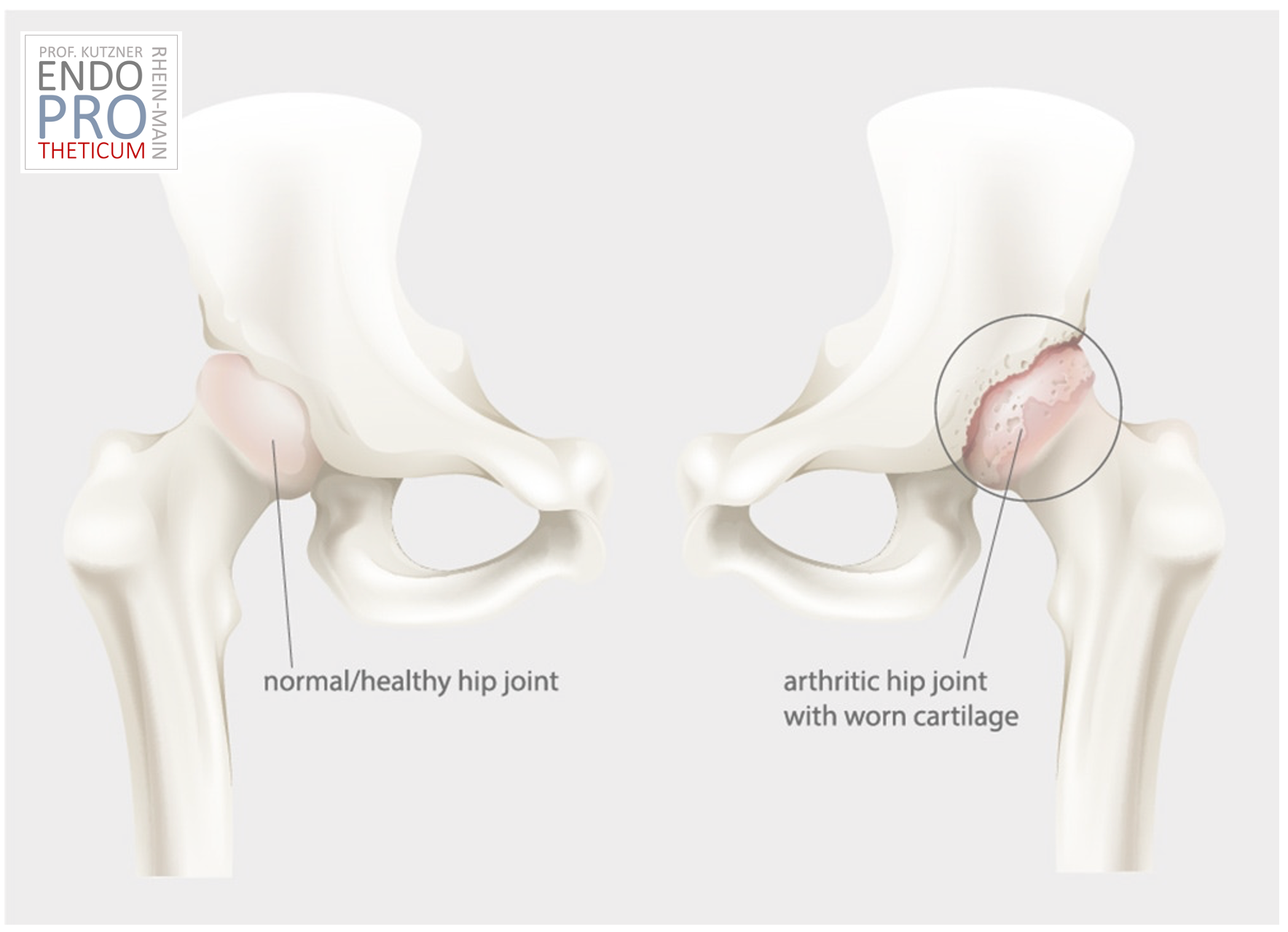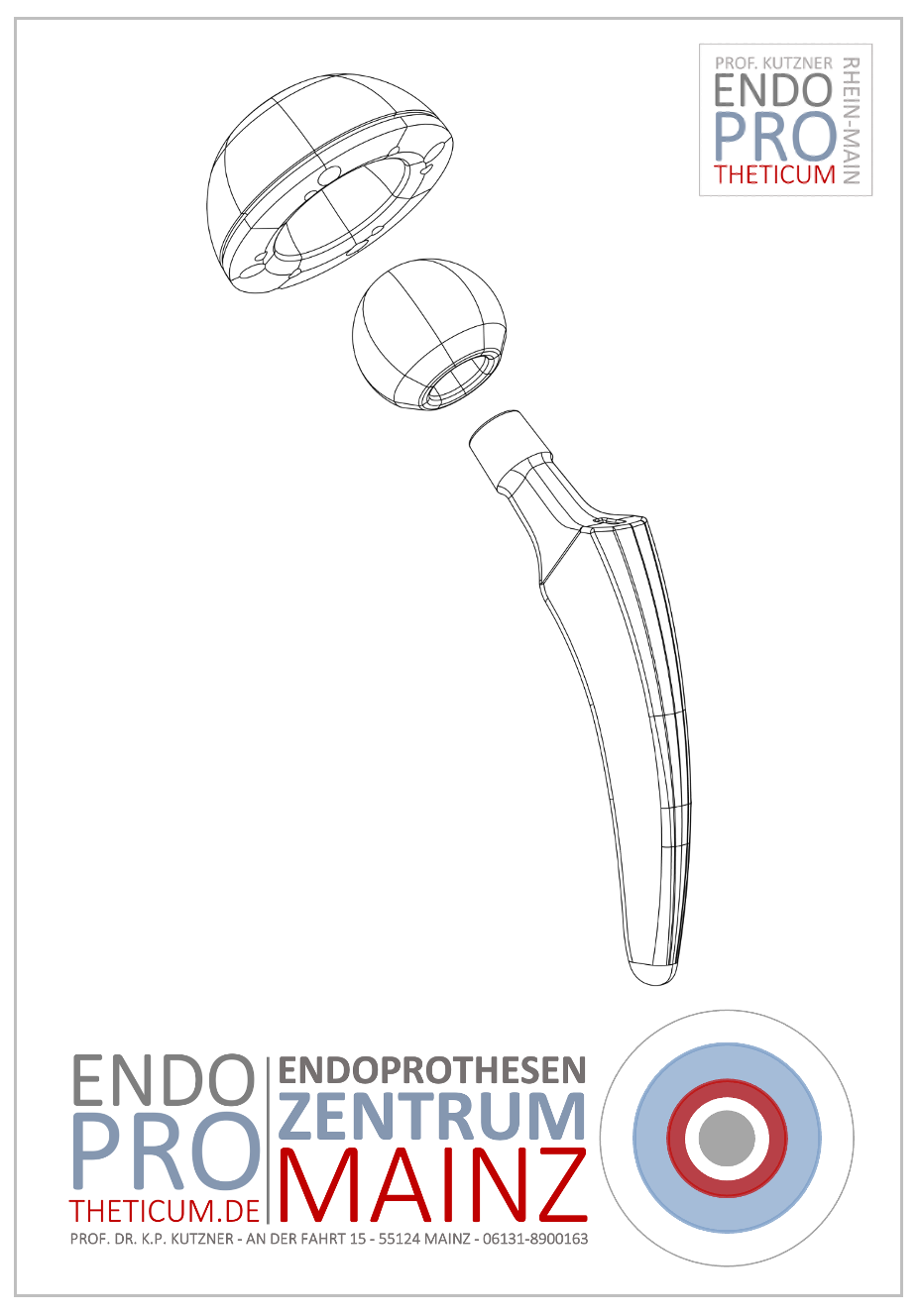Osteoarthritis of the hip (coxarthrosis) - everything you need to know
A widespread disease: osteoarthritis of the hip joint (coxarthrosis)

What is osteoarthritis of the hip (coxarthrosis)?
Hip osteoarthritis, also known as coxarthrosis, is one of the most common forms of osteoarthritis and affects the hip joint. It is a degenerative disease in which the joint cartilage progressively breaks down. The articular cartilage ensures smooth movement and absorbs stress on the hip joint. When this cartilage wears away, pain, stiffness, and loss of function occur.
Anatomy of the hip joint
The hip joint is a ball-and-socket joint that consists of the spherical joint head of the femur and the socket in the pelvis. It is covered by a protective layer of cartilage that facilitates joint movement.
Why is the hip joint susceptible to osteoarthritis?
Since the hip joint supports the entire body weight and is exposed to high mechanical stress, it is particularly susceptible to signs of wear and tear such as osteoarthritis.
Causes of hip osteoarthritis
The causes of coxarthrosis can be divided into primary and secondary factors.
1. Primary osteoarthritis
- Age-related wear and tear: As we age, cartilage loses its elasticity.
- Genetic predisposition: Familial histories can increase the likelihood.
2. Secondary osteoarthritis
- Injuries: Previous fractures or dislocations.
- Inflammatory diseases: Rheumatoid arthritis.
- Anatomical malformations: Congenital hip dysplasia.
- Incorrect loads: leg length differences or being overweight.
Risk factors
- Obesity: Being overweight puts excessive strain on the joint.
- Occupational stress: Heavy lifting.
- Sports overload: Especially sports with a lot of jumping.
Symptoms of hip osteoarthritis
1. Pain
- Pain in the groin, buttocks or thighs.
- Initially stress-dependent pain, later also pain at rest.
2. Stiffness and restricted movement
- Stiffness after getting up or during prolonged inactivity.
- Difficulty putting on shoes or climbing stairs.
3. Other symptoms
- Joint noises when moving.
- Muscle loss.
Diagnosis of osteoarthritis of the hip joint
1. Medical history A detailed conversation with the doctor about your symptoms.
2. Clinical examination
- Joint mobility test.
- Pressure pain tests.
3. Imaging
- X-ray: Depiction of cartilage thickness.
- MRI: In unclear cases for a precise examination of cartilage and soft tissue.
- Ultrasound: diagnosis of joint effusions.
Treatment of hip osteoarthritis
1. Conservative therapy
- Medications: NSAIDs, cortisone injections.
- Physiotherapy: building up the surrounding muscles.
- Hyaluronic acid: Promotes lubrication in the joint.
2. Surgical therapy
- Joint replacement: Hip prosthesis for severe wear and tear.
- Minimally invasive procedures: Early intervention for minor wear and tear.
Hip joint surgery for osteoarthritis
1. Indications for surgery
- Progressive pain.
- Massive restriction of movement.
2. Operation methods
- Total endoprosthesis (TEP): Complete replacement.
- Short-shaft prosthesis: Suitable for younger patients.
3. Prognosis and lifespan
- Durability of modern prostheses: expected today to be 20-30 years.
Living with hip osteoarthritis
1. Making everyday life easier
- Use of walking stick or shoe raisers.
- Conversion of living space (accessibility).
2. Exercise and sport
- Sports that are gentle on the joints: swimming, cycling.
- Avoiding high-impact sports like jogging.
Prevention of osteoarthritis of the hip joint
1. Healthy lifestyle
- Weight control.
- Balanced diet with anti-inflammatory foods (e.g. fish oil, turmeric).
2. Proper loading
- Regular moderate exercise to strengthen cartilage.
- Avoiding overload due to heavy work.
Advances in osteoarthritis therapy
1. Biological therapeutic approaches
- Use of stem cells.
- Gene therapy for regeneration.
2. Future technologies
- 3D printed implants.
- Robot-assisted operations.
Frequently asked questions about hip osteoarthritis
How quickly does hip osteoarthritis progress?
The progression of osteoarthritis in the hip joint varies greatly from person to person. Factors such as general joint stress, genetic predisposition and body weight play a decisive role. The course often begins with mild symptoms that can worsen over the years. However, early diagnosis and initiation of appropriate therapy can help slow the progression of osteoarthritis and maintain quality of life.
Can osteoarthritis of the hip joint be cured?
There is currently no cure for osteoarthritis because the damage to cartilage is irreversible. However, conservative or surgical therapies can reduce pain and improve mobility. The aim is to control symptoms and slow the progression of the disease as much as possible.
Which sports are suitable for hip osteoarthritis?
Gentle forms of exercise such as swimming, cycling or Nordic walking are recommended for hip osteoarthritis. These activities promote blood circulation, support cartilage nutrition, and strengthen muscles without putting undue stress on joints. However, high-impact sports such as running or football should be avoided.
When should a hip replacement be considered?
A hip prosthesis is usually recommended when conservative therapies are no longer sufficient to relieve pain or maintain mobility. When quality of life is severely limited and daily activities such as walking, standing or climbing stairs become a challenge, total endoprosthesis (TKA) can be an effective solution.
What are the latest advances in the treatment of osteoarthritis?
Modern medicine is constantly developing new approaches to treating osteoarthritis. These include:
- Biological therapies: Use of stem cells for cartilage regeneration.
- Advanced implants: Tailor-made prostheses for better adaptation to individual anatomy.
- Digitalization: Applications and wearables to improve therapy monitoring and adjustment.
- Minimally invasive surgical techniques: gentler procedures with shorter recovery times and lower risk of complications.
How long does a hip prosthesis last for osteoarthritis?
The lifespan of a hip prosthesis used to be typically 15 to 20 years. Today you can safely assume 20-30 years. This period may be shortened in younger patients or with vigorous physical activity. However, thanks to modern materials and techniques, prostheses with longer durability are also on the market. Regular follow-up examinations are crucial to detect possible complications early.
What alternatives are there to surgery for osteoarthritis?
In addition to surgical care, the following options are available:
- Injections of hyaluronic acid or platelet-rich plasma (PRP).
- Physiotherapy to strengthen muscles and improve mobility.
- Pain medications and anti-inflammatory agents.
The choice of therapy depends on the severity of osteoarthritis, the patient's age and general health. Comprehensive advice from a specialized orthopedist is recommended.
Conclusion
Osteoarthritis of the hip (coxarthrosis) is a challenge that can place both physical and psychological strain on those affected. However, there are numerous ways to maintain quality of life and slow the progression of the disease. With the right therapeutic approaches and early diagnosis, patients can lead active and fulfilling lives. Developments in endoprosthetics and biological medicine give hope for ever better treatment options for the future.
MAKE AN APPOINTMENT?
You are welcome to make an appointment either by phone or online .



























